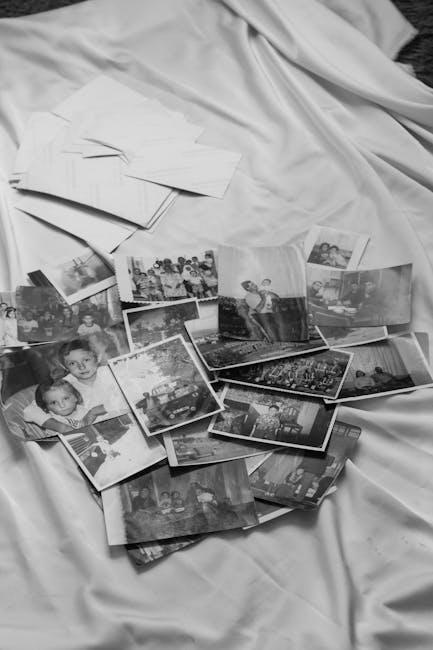In the quiet corners of our homes, tucked away in dusty attics and forgotten drawers, lie the whispers of our ancestors—stories waiting to be told, voices yearning to be heard. As we navigate the complexities of modern life, there’s an undeniable pull to understand where we come from, to weave the tapestry of our past into the fabric of our present. Starting to document your family’s history is more than just a journey through time; it’s an exploration of identity, a bridge connecting generations, and a heartfelt tribute to those who came before us. With empathy as our guide, we embark on this endeavor, opening our hearts to the laughter, the tears, and the wisdom of our forebears, crafting a narrative that celebrates the enduring spirit of family. Join us as we uncover the art of preserving these cherished memories, ensuring that the stories of yesterday continue to illuminate our paths today and tomorrow.
Unearthing the Roots: Discovering Your Familys Hidden Stories
Embarking on the journey to document your family’s history can be both exhilarating and deeply moving. It’s a process that stitches together the stories of generations, giving you a rich tapestry of your heritage. Begin by gathering the stories and anecdotes that have been shared around family gatherings. Speak with your relatives, especially the elders, who are often living libraries of your family’s past. Ask open-ended questions that encourage storytelling, such as, “What was life like when you were my age?” or “Can you share a memory of your grandparents?”
Once you’ve gathered stories, it’s time to organize and preserve them. Consider using a mix of digital and physical methods to safeguard these treasures. Create a digital archive using cloud storage or a dedicated family history app to keep your information safe and accessible. Meanwhile, craft a physical scrapbook or journal to hold cherished photographs, letters, and other memorabilia. This tangible record not only preserves your family’s history but also becomes a cherished heirloom for future generations. As you document, remember to respect the privacy and wishes of your family members, ensuring that the stories are shared with care and consent.

Creating a Legacy: Tips for Gathering and Preserving Family Memories
Every family has a unique tapestry of stories, woven through generations, waiting to be discovered and cherished. The art of preserving these memories is a gift to future generations, offering them a glimpse into their roots. To start this meaningful journey, consider capturing stories from the oldest members of your family. Sit down with grandparents or elderly relatives and record their anecdotes. Ask them about their childhood, significant life events, and cherished traditions. These conversations not only preserve history but also strengthen bonds.
- Digitize old photographs: Transform physical photos into digital formats to ensure they stand the test of time. Use a high-quality scanner or even a smartphone app to capture these visual memories.
- Create a family tree: Utilize online platforms or software to map out your family lineage. This can be a collaborative effort, involving relatives from near and far.
- Start a family blog: Share stories, recipes, and traditions through a family blog. This can be a space for everyone to contribute, keeping the family narrative alive and evolving.
By incorporating these methods, you can create a rich legacy of memories that resonate with the essence of your family’s history, ensuring that these treasures are cherished for generations to come.

Connecting the Dots: Techniques for Organizing Family History Information
Unraveling the tapestry of your family’s history can be both exhilarating and overwhelming. The key to a seamless journey is mastering the art of organization. Begin by creating a central repository for all your collected data. This could be a digital archive or a physical binder, but consistency is crucial. Use color-coded folders or tags to categorize documents by family branch or type, such as birth certificates, marriage licenses, and photographs.
To further streamline your research, consider these organizational techniques:
- Chronological Order: Arrange information by dates to see the progression of your family story.
- Family Tree Software: Utilize tools like Ancestry or MyHeritage to digitally map out relationships and store data.
- Storytelling Approach: Write brief narratives for each family member to capture not just facts, but also the essence of their lives.
- Cross-referencing: Link related documents to ensure no detail gets lost in the shuffle.
With these techniques, you’re not just compiling facts; you’re weaving a rich, interconnected story that will resonate with generations to come.
Heartfelt Chronicles: Engaging Family Members in the Storytelling Journey
In the quest to weave the tapestry of your family’s history, the magic lies in engaging each member to share their unique stories and perspectives. Begin by creating an atmosphere of warmth and inclusivity, where every voice is valued. Consider organizing a cozy family gathering, either in-person or virtually, where everyone can feel comfortable sharing their memories. Provide gentle prompts or thought-provoking questions to spark conversations, such as:
- What was a defining moment in your childhood?
- Can you share a cherished family tradition?
- Who has been your greatest inspiration and why?
Emphasize the importance of capturing these stories in various formats—written accounts, audio recordings, or even video clips. Encourage creativity by inviting family members to contribute through their preferred mediums, whether it’s a handwritten letter, a voice note, or a collage of photographs. Remember, the goal is to build a rich mosaic of narratives that celebrates the diversity and shared experiences within your family. As you embark on this storytelling journey, let empathy guide you, ensuring each tale is preserved with care and respect.


